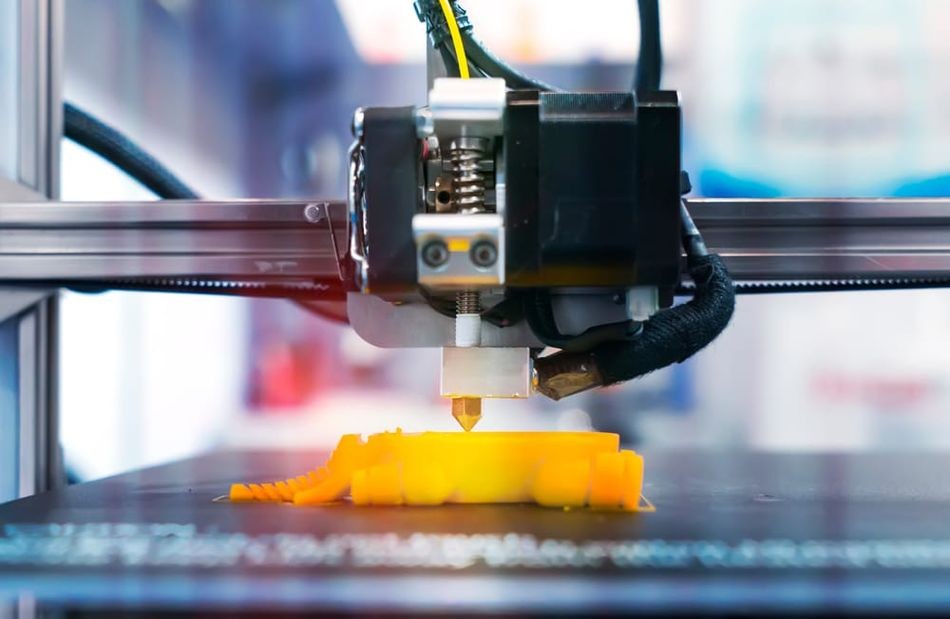3D printing has revolutionized manufacturing, offering the ability to create a vast array of objects, from replacement parts to intricate models, directly from your home or workshop. While the creative possibilities are endless, it’s crucial to consider the materials you’re using, especially when printing items intended for kitchen use or direct contact with food. One of the most popular materials for 3D printing is PLA (polylactic acid), a bioplastic. But Is Pla Plastic Food Safe? This article delves into the factors influencing PLA’s food safety, when to avoid food contact, and how to ensure your 3D prints are safe for culinary applications.
Understanding PLA and its Food-Safe Potential
PLA is a thermoplastic derived from renewable resources such as corn starch, maize, or sugarcane. It’s favored for its ease of use, lower printing temperature compared to materials like ABS, and often doesn’t require a heated print bed. Because of its plant-based origins, many assume PLA is inherently food-safe and biodegradable. While PLA offers certain advantages, its food safety is not always guaranteed. Several factors can affect whether PLA material is actually safe to use in contact with food, such as additives and dyes in the PLA filament, the type of printhead being used, and porous structures.
Factors Influencing PLA’s Food Safety
PLA Additives: The Color Conundrum
In its purest form, PLA is generally considered food safe. However, the situation becomes more complex when dealing with colored PLA filaments. The additives and dyes used to give PLA its vibrant hues may not be food-grade. Therefore, if you’re 3D printing items like cookie cutters or molds, it’s best to use natural, undyed PLA filament.
Dyes and additives in PLA filament can influence whether the material is food-safe. Using undyed PLA minimizes the risk of contamination from non-food-grade colorants.
Always consult the material information and safety data sheet (SDS) for your specific filament brand to check for any non-food-grade additives. Transparency from the manufacturer is key to ensuring food safety.
Printhead Material: The Risk of Contamination
The 3D printing process itself can introduce potential contaminants. Many 3D printers use hotends made from non-food-grade materials. As the filament is extruded, it comes into direct contact with the metal hotend, potentially leading to the transfer of trace elements to your 3D printed part. Brass nozzles, for example, can contain lead, a known toxin.
For food-safe printing, opt for stainless steel nozzles. Stainless steel is considered a food-safe material and minimizes the risk of contamination.
Bacteria Growth: The Porosity Problem
Even with food-safe filament and nozzles, 3D printed parts present a unique challenge: their porous structure. FDM (Fused Deposition Modeling) 3D printing creates objects layer by layer, resulting in tiny pores and crevices that can trap moisture and food particles. These trapped particles provide an ideal breeding ground for bacteria.
Cleaning PLA parts thoroughly can be difficult, if not impossible, due to its low heat resistance. Boiling or dishwashing PLA can cause it to warp or degrade. Therefore, it is safer to use a PLA utensil or plate once and then dispose of it.
Filament Contamination: Preventing Cross-Contamination
Cross-contamination is another potential hazard. If your 3D printer has previously been used with non-food-safe filaments like ABS, traces of those materials can contaminate subsequent PLA prints. This contamination can occur on the print bed, inside the extruder, or within the hotend.
Ideally, dedicate a 3D printer solely for printing food-safe PLA parts to eliminate the risk of cross-contamination.
Ensuring Food Safety: Coatings and Alternatives
When 3D printing items for food contact, prioritizing caution is crucial. Applying a food-safe coating or sealant is one way to enhance the safety of your PLA prints.
Epoxy Resins: Sealing the Surface
Food-safe epoxy resins can create a barrier that seals the PLA surface, preventing bacterial growth and the leaching of potentially harmful substances. However, it’s essential to choose an epoxy resin specifically certified as food-safe by the FDA.
Remember that liquid epoxy resins contain toxic materials and must be handled with care. They are only safe after proper curing and hardening.
Silicone Coating and Casting: A Flexible Solution
Silicone offers another food-safe coating option. It effectively seals the pores in PLA prints, creating a watertight and easily cleanable surface. Silicone is also less hazardous to work with than epoxy resins.
For durable, long-term food-safe products, consider 3D printing a mold and casting it with food-grade silicone. This is a popular method for creating custom ice cubes, candies, or chocolates.
Important Considerations for Coatings
Food-safe coatings can degrade over time with repeated use and washing. Be mindful of the coating’s limitations and read the manufacturer’s instructions carefully. Some coatings are dishwasher-safe, while others are not. Certain coatings may also be unsuitable for use with hot foods or liquids.
Conclusion: Informed Decisions for Food-Safe 3D Printing
While pure PLA is generally considered food-safe, factors like additives, the printing process, and the potential for bacterial growth can impact the safety of 3D printed items for food contact.
To minimize risks:
- Use natural, undyed PLA filament.
- Opt for stainless steel nozzles.
- Apply a food-safe coating or sealant.
- Consider single-use applications.
- Dedicate a 3D printer for food-safe prints.
Alternative filaments like PETG may also be suitable for food containers. Ceramics, when properly treated, are another food-safe material option.
Ultimately, making informed decisions and taking appropriate precautions are essential for ensuring the safety of 3D printed items used with food.
Frequently Asked Questions (FAQs)
Q: Is PLA food-safe for hot liquids?
A: While PLA is generally considered food-safe in its pure form, it has a low glass transition temperature. This means it can soften and deform when exposed to temperatures above 140°F (60°C). Therefore, PLA is not recommended for use with hot liquids, as it could release microplastics or lose its structural integrity.
Q: Can I put PLA in the dishwasher?
A: No, PLA is not dishwasher-safe. The high temperatures and harsh detergents in dishwashers can cause PLA to warp, crack, or degrade. Hand washing with mild soap and cool water is recommended for cleaning PLA items.
Q: What are the best food-safe coatings for PLA?
A: Several food-safe coatings can be used to seal PLA prints, including:
- Food-grade epoxy resin: Provides a durable, waterproof barrier. Ensure the resin is certified as food-safe by the FDA or a similar regulatory agency.
- Food-grade silicone: Flexible, heat-resistant, and easy to apply. Suitable for creating molds or coating existing PLA items.
- Polyurethane coatings: Some polyurethane coatings are certified as food-safe. Check the manufacturer’s specifications before using.
Q: Can I use PLA for long-term food storage?
A: PLA is not ideal for long-term food storage due to its porous structure and potential for bacterial growth. Even with a food-safe coating, there is a risk of the coating wearing down over time. For long-term storage, consider using food-grade containers made from materials like glass, stainless steel, or BPA-free plastic.
Q: Where can I find food-safe PLA filament?
A: Several manufacturers offer PLA filament specifically marketed as food-safe. Look for filaments that are labeled as “food-grade” or “FDA-compliant.” Always check the material safety data sheet (MSDS) to confirm the filament’s composition and safety information.
References
[1] Conn RE, Kolstad JJ, Borzelleca JF, Dixler DS, Filer Jr LJ, LaDu Jr BN, Pariza MW. Safety assessment of polylactide (PLA) for use as a food-contact polymer. Food and Chemical Toxicology. 1995 Apr 1;33(4):273-83. https://www.sciencedirect.com/science/article/abs/pii/027869159400145E
[2] The Essential Guide to Food Safe 3D Printing: Regulations, Technologies, Materials, and More [Internet]. Formlabs, 2024. Available from: https://formlabs.com/blog/guide-to-food-safe-3d-printing/
[3] Engineering After Hours. 3D Printed Molds with Silicone Rubber from Smooth On [Internet]. Youtube, June 24, 2020. Available from: https://www.youtube.com/watch?v=LBnUZ-AEuWw
[4] Kočí, Jakub. How to make food-grade 3D printed models [Internet]. Prusa Research, December 4, 2020. Available from: https://blog.prusa3d.com/how-to-make-food-grade-3d-printed-models_40666/

